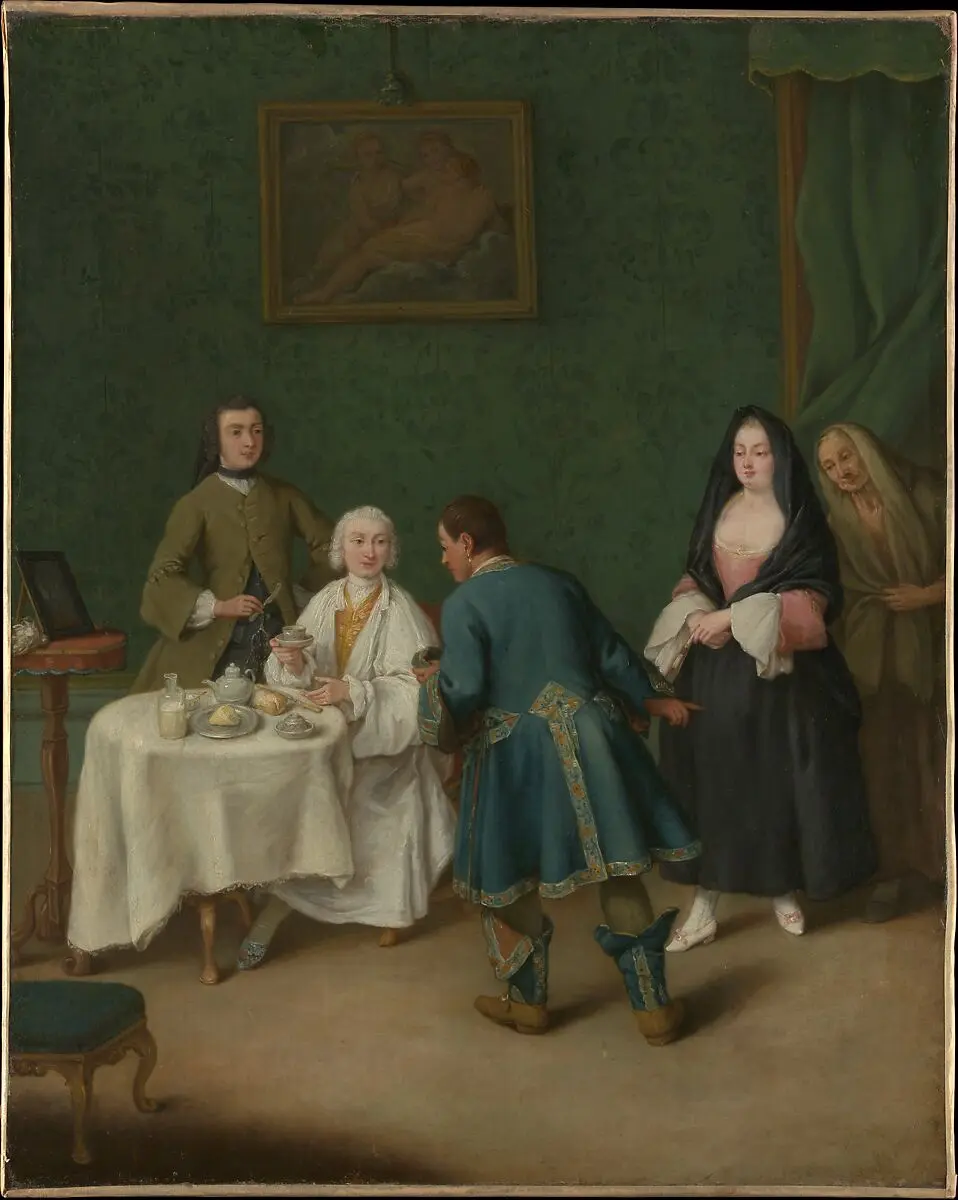What is it about fine dining that makes it so special? This piece explores the true essence of luxury gastronomy, tracing its roots in Europe to its growth in Asia, and turning to the emerging culinary voices in the Philippines to ask what it means today.
When we ascribe the word “fancy” to describe a restaurant, we all know what it means: single-ingredient menus, innovative techniques that we would probably never use when cooking at home (think sous vide, en croûte, molecular gastronomy), attentive wait staff, a sommelier to help you decide on whether to pair your foie gras appetizer with the Sauternes or the Saint-Émilion. Fine dining and high-end cuisine are seen as the pinnacle of culinary achievement and artistry, where food is not just a form of sustenance but an art form.
Food, and particularly the act of someone preparing a meal for you, stands as a uniquely intimate art form—you’re literally taking into your body what someone else has prepared. While we all must eat to survive, some people eat to live and others live to eat. Though not every meal can or should be expertly prepared and plated by a highly trained chef, there’s something truly special about experiencing such culinary artistry from time to time. But what exactly has shaped this elaborate culinary tradition, and where does its enduring appeal lie?
READ ALSO: Goxo Means Delicious: Inside The New 12-Seater Restaurant In Salcedo Village

A Taste of History
What we know as fine dining today has roots across many cultures and eras and has evolved over time due to changing tastes, advances in gastronomy, and societal impacts. France is widely regarded as the birthplace of haute cuisine, with its foundations laid by Marie-Antoine Carême in the late 18th century and early 19th century, the celebrated chef who became known as “the king of chefs and chef of kings.”
Across Europe in the 19th century, other chefs began honing their skills in the culinary arts. One of the most celebrated chefs of the time was Auguste Escoffier. By simplifying and modernizing the elaborate style of Marie-Antoine Carême, he took fine dining and haute cuisine into a new era with his motto: “Above all, keep it simple.” Inspired by his time in the army, Escoffier developed the brigade de cuisine, a hierarchical system of organizing kitchen work into specific sections, which is still standard in many restaurants today.
Moving into the 20th century, many looked to French techniques as a foundation for their cooking while incorporating local produce and ingredients. In 1900, the Michelin Guide, created by tire manufacturers André and Édouard Michelin, was printed as a free handbook for French motorists. What began as a simple marketing tool—a handbook listing places for meals, lodging, and car maintenance to encourage more driving—evolved into the world’s most influential restaurant rating system.
The 1960s brought about the rise of nouvelle cuisine, which placed importance on freshness, lightness, clarity of flavor, and the aesthetic presentation of dishes. Simpler cooking techniques were employed and cooking times were reduced, especially for fish, seafood, and vegetables, to retain their natural taste. Large menus give way to concise, seasonal offerings that showcase the freshest available ingredients. We can see this influence on menus today. On most fine dining menus, the economy of words has trended downwards. Menus tend to be frugal in format, with listed dishes sometimes consisting of a single word (or, in the case of Gaggan in Bangkok, a single emoji).
In the Philippines, the Champagne Room at the historic Manila Hotel exemplified fine dining during the 1980s, offering French-continental cuisine that incorporated local ingredients primarily in its signature desserts. The restaurant served as a prestigious venue for visiting dignitaries, offering an atmosphere of old-world luxury with its tasseled crystal chandeliers, ornately printed fabrics, plush carpeted floors, and elegant archways framing the dining experience.
The late 1990s and early 2000s marked a revolutionary period in fine dining, with groundbreaking restaurants reimagining what the restaurant experience could be. El Bulli in Roses, Spain, was originally a small beachside bar opened by Hans and Marketa Schilling in 1964. In 1976, under French chef Jean-Louis Neichel, El Bulli earned its first Michelin star.
In 1984, a young line cook named Ferran Adrià joined its ranks. By 1987, he became head chef and began transforming its culinary philosophy. Ferran Adrià’s El Bulli revolutionized fine dining by transforming restaurants into culinary laboratories. Operating just six months a year, the restaurant received over two million annual reservation requests while seating only 8,000 diners. Adrià pioneered molecular gastronomy through innovative techniques like spherification and creating dishes such as liquid olives, with tasting menus featuring up to 40 intricate, conceptual courses.
Across Europe, another culinary revolution was unfolding—this time in Copenhagen, where Noma redefined fine dining with its innovative take on New Nordic Cuisine. Founded in 2003 by René Redzepi and Claus Meyer, it emphasised hyper-local ingredients, foraging, and sustainability. Noma introduced unconventional elements like fermented products, ants, and moss. Through its radical commitment to local ingredients, Noma framed luxury as an exploration of a region’s terroir and placed value on regional identity. The restaurant earned two Michelin stars and was crowned The World’s 50 Best Restaurants five times.
These restaurants created culinary experiences that were part theater, part art, and part scientific experiment. This era fundamentally reshaped global gastronomy, moving from traditional haute cuisine to a more innovative, locally-focused, and experiential approach to dining.
For decades, Europe dominated the fine dining landscape, with France and French techniques at its heart. But in 2007, the spotlight shifted eastward to Japan. That year, the Michelin Guide expanded to Tokyo, and Japan overtook France as the country with the most Michelin stars. This shift not only recognized Japan’s exceptional cuisine but also highlighted the country’s deep-rooted culinary philosophy, shaped by shokunin—the pursuit of perfection in one’s craft—and omotenashi, the art of wholehearted hospitality. These principles, emphasizing mastery, precision, and an almost spiritual dedication to the guest experience, positioned Japanese fine dining as a new global standard.
From the hushed intimacy of omakase sushi counters to seasonal multi-course kaiseki meals, chefs like Jiro Ono became culinary artists revered for their extraordinary skill and precision. But Japan’s gastronomic influence refused to be contained within its own culinary traditions. With a philosophy of uncompromising craftsmanship, Japanese chefs began to reimagine Western cuisine through their unique cultural lens, evident in Tokyo’s world-class French restaurants like Quintessence and L’Effervescence, where classic French techniques were transformed. Here, traditional French cooking was refined through a Japanese approach that celebrates mastery, restraint, and an almost meditative attention to detail.
READ ALSO: The Fairytale of Ma Mon Luk: The Creator Of The Philippines’ Famous Mami

Something Special
What is it about fine dining that draws us in and creates the sense of luxury? Beyond the food itself, what makes the experience so compelling? Conversations with young professionals in the culinary world reveal a fresh perspective on luxury dining today. Despite their different roles and backgrounds, some clear patterns emerged in their responses.
For these culinary talents, luxury isn’t about the price tag—it’s about being transported.
Mark Advincula, Head Chef of AF Hospitality’s Steak & Frice in Bonifacio Global City, sees restaurants as “living, breathing entities” with their own personalities and belief systems. Javier de Jesus, a graduate of the Culinary Institute of America, now a pastry cook at The Grill in New York City, puts it simply: “True luxury in fine dining isn’t just about the price—it’s about how the experience makes you feel.” He loves places that can “transport you into their world while still feeling warm and inviting, almost like dining at a friend’s place but on a whole other level.”
These professionals consistently value perfect simplicity over flashy complexity, recognizing that true luxury comes from simplicity and thoughtfulness done right rather than gilding the lily. Lui Clavano, Managing Partner and Director of Operations at Geronimo Concepts, believes that “simplicity done at the highest level feels more luxurious than excessive presentation.” His standout experience at 4 Charles in New York featured “dishes that were simple but executed flawlessly, with no unnecessary garnishes or overcomplications.” He sees this same philosophy in Manila’s dining scene, particularly in Lusso, the brainchild of the late and trailblazing culinary icon Margarita Fores, “which embodies understated luxury with warm yet professional hospitality.”
READ ALSO: Food For Thought: Lui and LA Clavano On Remixing The Local Dining Scene
Service, however, might be where luxury truly lives. De Jesus compares a great dining experience to an orchestra: “While the food is at the core, like a violin or trumpet, the complete composition wouldn’t come together without the bass and clarinet, much like ambiance and service.” Clavano notes that “the best service feels natural—attentive but never overbearing,” while Advincula describes great servers as “guiding the flow of the evening with grace, anticipating your needs before you even have to ask.”
What ties everything together is the ability of these experiences to create lasting memories. As de Jesus references Will Guidara, restaurateur behind the renowned Eleven Madison Park in New York: “People will forget what you do; they’ll forget what you said. But they’ll never forget how you made them feel.” This emotional connection is often found in the smallest details—like de Jesus’s experience at Thomas Keller’s Per Se in New York, where a personalized menu and a thoughtfully chosen takeaway gift extended the experience beyond the restaurant’s doors, leaving a lasting impression even after he returned home.
What these young culinary voices suggest is that luxury isn’t about extravagance—it’s about the intentionality of each moment, and each little detail acting as building blocks to create something special. It’s about creating moments that stay with you long after the last bite. Whether through a perfectly composed dish, a seamlessly orchestrated dining experience, or an unexpected gesture of connection, luxury dining achieves its highest form when it doesn’t just feed the body, but when it also makes you pause, smile, and think, “Now that was something special.”





